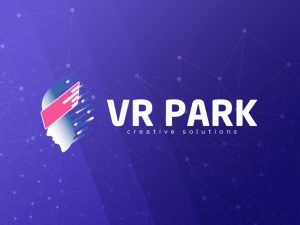2023-9-26 20:06 |
Virtual Reality and Augmented Reality development requires a variety of programming languages. Some of the most popular include C#, Unity, and Unreal Engine. The availability of learning resources plays a significant role. There are numerous online tutorials, courses, and documentation for popular VR and AR platforms. Utilizing these resources, practicing, and getting help with programming assignments whenever needed can make the learning process more manageable.
AR differs from VR in that it overlays data on the real world rather than creating a virtual environment. It’s most commonly used on mobile devices such as smartphones and augmented reality glasses or headsets like Google Glass or Microsoft HoloLens. VR and AR technologies are evolving rapidly. Staying up-to-date with the latest developments, tools, and best practices is crucial for success in this field.
What VR and AR can offer nowadays? InteractivityVR and AR offer exciting new branding, gaming, e-commerce, and education possibilities. However, there is a clear difference between the two: AR overlays digital information on the user’s real-world experience, while VR completely immerses the users in a simulated world.
Addressing business needsThe technology behind both technologies is constantly improving, making it easier and more cost-effective for companies to take advantage of its many benefits. As such, it’s important to remember that the best way to leverage VR and AR is not to think of existing applications that can be improved but to imagine brand-new business processes that could utilize this advanced technology.
EntertainmentVirtual Reality creates a computer-generated artificial environment that mimics a real or imaginary world and allows users to explore it using computers, sensors, headsets, and gloves. This interaction gives users the sensation of being inside a 3D image and can even feel the virtual surroundings. It is also one of the most immersive forms of technology. It can make dangerous real-world activities like surgery, plane flights, or combat easier to train and practice without any user risk.
Tools for creating VR and AR applicationsMany different tools and programming languages exist for creating VR and AR applications. Some of the most popular include Unity and Unreal Engine. Unity is a game engine with a large community and a user-friendly interface. It uses a scripting language called UnityScript that is based on JavaScript.
Other options for creating AR and VR applications include WebGL and Lua. WebGL is a cross-platform framework that allows developers to create interactive experiences for the web. Lua is a fast and lightweight programming language that has been used in video games for years. It is also a good choice for AR and VR because it can run on devices with low computing power.
The MetaverseCreating immersive experiences within the metaverse requires advanced technologies. These include cloud computing, networking, and storage to support large virtual spaces. It also requires AI, which makes virtual characters seem realistic and behave intelligently. Additionally, AI can look at what users do in the virtual world and recommend customized experiences.
Many tech companies are positioning themselves to become portals to the metaverse. Some, like Nvidia, a leader in video game chips, are investing heavily in this arena. Others are leveraging their existing technologies to provide metaverse-like experiences.
Microsoft, for instance, uses its Mesh platform to offer virtual office space and other work environments. One example is its collaboration with Accenture, which uses a virtual amusement park called “One Accenture Park” to onboard new hires. The experience includes a virtual boardroom and digital monorails. It is not yet a full-fledged metaverse, but it is an excellent example of how businesses use VR to create immersive, collaborative experiences for their employees.
The Future of AR and VR technologiesAs VR and AR become more commonplace, companies must develop a clear understanding of these technologies. By leveraging these tools and engaging in a collaborative process with business units, IT professionals can help guide their organizations to implement this new technology successfully. While there are still hurdles to overcome, like technical limitations and price points, the future for VR and AR is promising. These immersive technologies can create exciting and engaging user experiences that transform how we work, play, and live.
As more and more companies look for opportunities to take advantage of this emerging technology, the need for programmers with AR/VR skills will continue to grow. The good news is that many of the same concepts that make up VR/AR are the same as what it takes to develop a traditional application. As such, many of the same languages can be used to create applications that can run on VR/AR hardware.
The post Coding for Virtual Reality and Augmented Reality appeared first on NFT News Today. origin »Reality Clash (RCC) на Currencies.ru
|
|
























